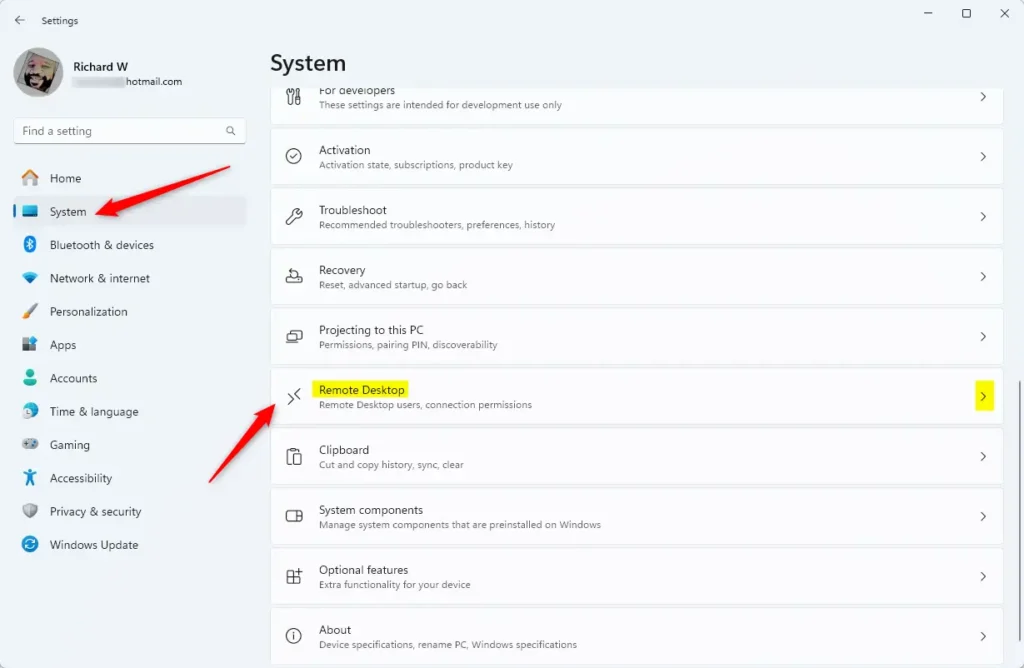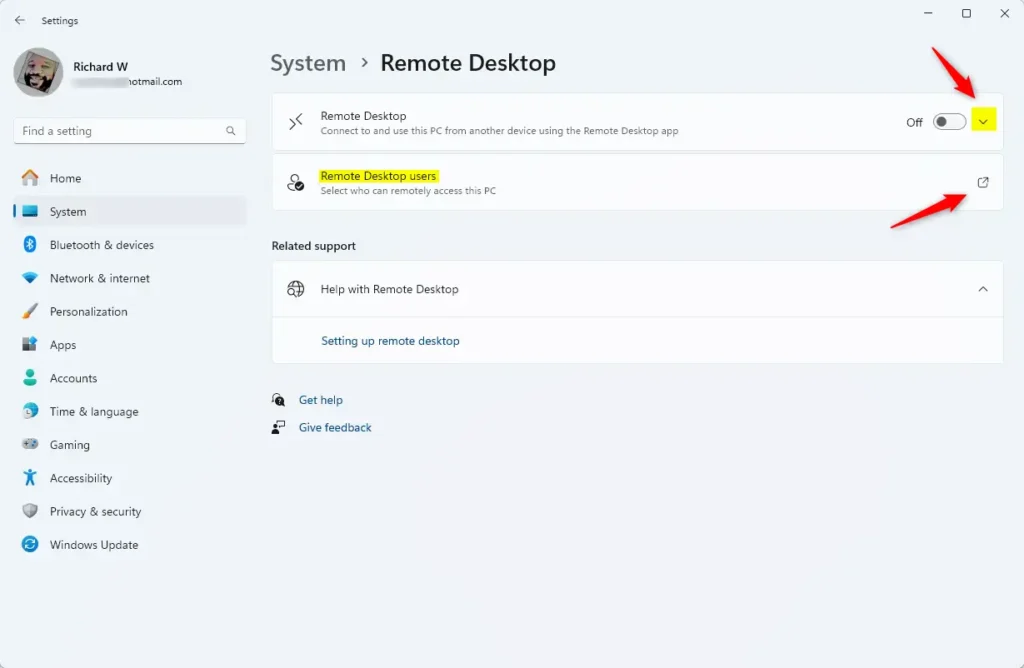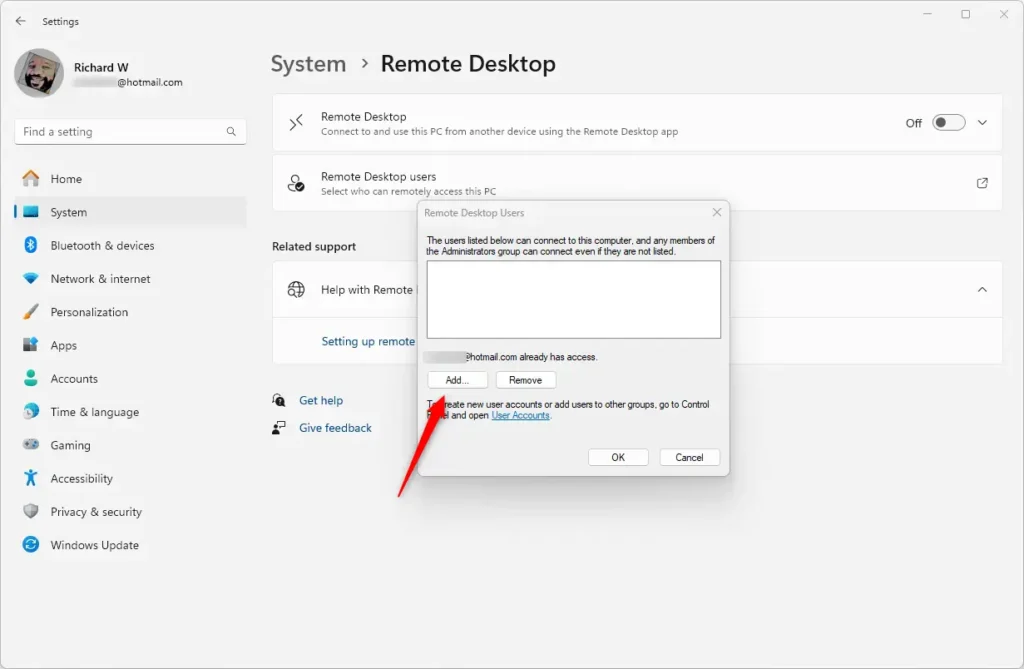This article explains how to turn on or off Microsoft Remote Desktop in Windows 11.
Remote Desktop is a built-in feature in Windows that enables you to connect to another computer remotely, allowing you to use it as if you were physically sitting right in front of it. With Remote Desktop, you can access your work or home computer from anywhere, utilizing all its resources, including files, applications, and network services.
Remote Desktop is disabled by default in Windows 11, but you can turn it on or off in the settings.
Remote Desktop is essential for users needing remote access, providing technical support, or connecting to a computer that isn’t physically accessible.
Enabling remote desktops can introduce security risks, such as exposing your computer to unauthorized access. It’s essential to carefully consider the benefits and dangers of allowing Remote Desktop to make a well-informed decision.
Turn on Remote Desktop
As mentioned, users can turn Remote Desktop on or off in Windows.
Here’s how to do it.
First, open the Settings app.
You can get there by clicking the Start button and selecting the Settings icon gear, as shown below.

Next, select System on the left and the Remote Desktop tile on the right to expand it.

On the Remote Desktop pane, select the “Remote Desktop” tile. Then, toggle the switch button to the On position to enable it.
To disable it, toggle the button to the Off position.

Add a user to the Remote Desktop users’ group
Once Remote Desktop is turned on, you’ll need to add users who can connect to the machine by adding them to the “Remote Desktop Users” group.
By default, users in the system administrators group can connect using Remote Desktop.
To add users, expand the “Remote Desktop” tile. Then, use the link to open the Add / Remove users window.

Next, click the Add button to add users to the group.

That should do it!
Conclusion:
- Remote Desktop in Windows 11 allows for convenient access to your computer from anywhere.
- It is disabled by default, so security will be ensured until you enable it.
- Enabling Remote Desktop can facilitate remote work, technical support, and access to files and applications.
- Adding users to the “Remote Desktop Users” group is essential for controlling who can connect.
- Always consider the security implications before enabling remote desktop access on your system.

Leave a Reply Cancel reply